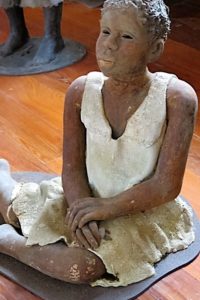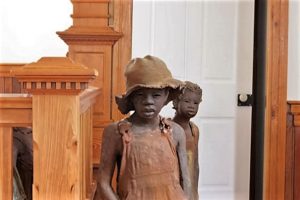I can’t leave Louisiana’s Plantation Country without telling you about Whitney Plantation, probably the “most different” of them all. Begun as a sugar cane operation in 1752, it was finally opened to the public for the very first time in 2014, and has the distinction of being the ONLY plantation in Louisiana that is dedicated solely to educating the public about the slaves and the conditions under which they lived and worked.
Located on Highway 18 in Wallace, LA, you will not leave from a visit to Whitney the same way you arrived. The tour, the exhibits, and the surroundings will make a lasting impression. It’s very sobering to be confronted so graphically with the cruelty these innocent human beings endured. There are many museums dedicated to telling the story of the Holocaust, but this is the only place in the United States where the issue of slavery is dealt with so passionately and vividly. Interviews in the 1930’s with more than 2300 former slaves were conducted as part of the Federal Writers’ Project. The information and quotes scattered throughout the Whitney grounds and in the narrated tour are derived from those interviews.
John Cummings, a New Orleans lawyer and multi-millionaire who has become one of the largest landowners in the area, owns Whitney Plantation and is vehement about the need to educate people, not about the rich white people who inhabited “the big houses” with their art and fine antiques, but about the people who actually sweated, toiled and were beaten in the process of making those big-house-dwellers wealthy. He believes that “racism needs to become an antique through education.”
Mr. Cummings continues to put money where his convictions are through the Good Shepherd School in New Orleans. They started with 12 black students and are now up to 88. Students attend classes 6 days a week from 8:00 a.m. to 5:45 p.m. 11 months a year. Expectations are high, and black students are rising to the challenge. “What a change we can make (in this country) when we send more black men and women to college than to the penitentiary,” Cummings preaches.
Statues of slave children that are on the grounds are the work of Woodrow Nash.
I strongly urge you to include Whitney Plantation in your itinerary whenever you are in this part of the country. An article in National Geographic calls it “The Plantation Every American Should Visit.” I agree.


Leave a Reply